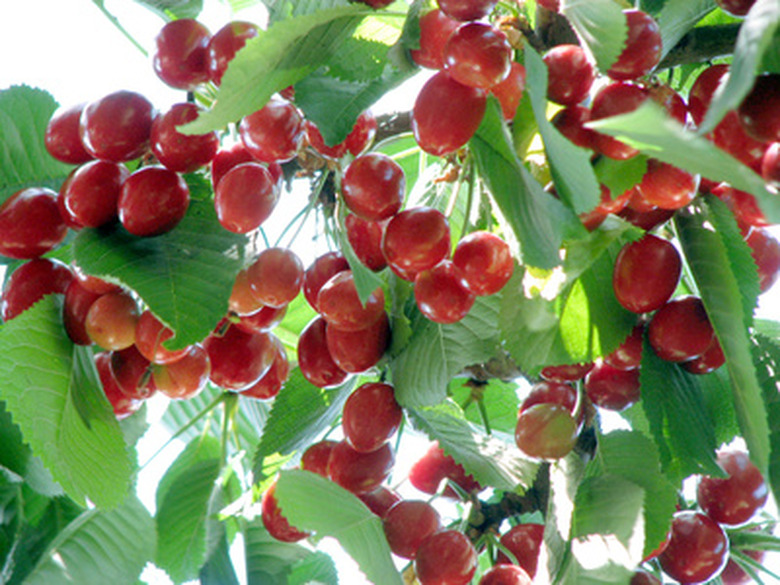How To Grow Cherry Trees In Wisconsin
Things Needed
- Garden spade
- Organic mulch
- Nitrogen fertilizer
- Insecticide
- Fabric row covers
- Bird netting
According to Door County's Seaquist Orchards, Wisconsin grows 5 percent of the nation's cherry crop. The majority of Wisconsin's cherries are grown in Door County, the "thumb" extending into Lake Michigan along Wisconsin's east side. The secret to the success of Door County's cherry trees is that spring comes a little earlier and fall lasts a little longer thanks to the lake's moderating effect. Not all of the state is as temperate, but home growers raise plenty of the tart fruit for pies and jams.
Step 1
Choose tart cherry varieties such as Montmorency, Meteor and Northstar, which ripen in July. Most sweet cherries bloom too early; even tart Montmorency cherries may be susceptible to late frosts in northern and western parts of the state. Look for trees grafted onto hardy Mahaleb root stocks.
- According to Door County's Seaquist Orchards, Wisconsin grows 5 percent of the nation's cherry crop.
- Not all of the state is as temperate, but home growers raise plenty of the tart fruit for pies and jams.
Step 2
Plant trees in well-drained fertile sandy loam soil in full sun; cherries will not tolerate soggy soil or standing water. Cultivate soil to a depth of 6 inches and add lime if necessary to achieve a soil pH between 6.0 and 7.0
Step 3
Plant trees on a gentle slope, out of lower areas where frost settles and below windy hilltops. Give each tree between 100 and 150 square feet of space; check planting directions that come with the tree for specifics. Potted trees may be planted anytime, but plant bare-root happens-trees-spring.html'>trees in spring after the soil has dried and warmed–late April to May in southern Wisconsin and a few weeks later in the north.
Step 4
Set the tree in a hole so it sits with the graft at or slightly higher than the soil surface and water well. Prune the leader on a new tree to 30 to 40 inches tall to encourage lower branching. Keep the area under the tree's canopy clear of weeds and grass out to its edge or drip line; mulch the tree with compost or wood chips, leaving a moat around the tree trunk.
- Plant trees in well-drained fertile sandy loam soil in full sun; cherries will not tolerate soggy soil or standing water.
- Keep the area under the tree's canopy clear of weeds and grass out to its edge or drip line; mulch the tree with compost or wood chips, leaving a moat around the tree trunk.
Step 5
Give young trees 3 to 5 gallons of water a week; always check to make sure the water is draining quickly through the surface. Fertilize your tree a few weeks after planting. University of Wisconsin Extension recommends 1 oz. of nitrogen for each year of a tree's age but no more than 1/2 lb. of nitrogen per tree in any year. Apply the fertilizer within the drip line.
Tip
County extension agents can refer you to an office that does soil tests. Complete a soil test before planting so you can add any necessary amendments and micronutrients before planting. Base fertilization on soil-test results and recommendations. Control cherry fruit flies with insecticide when they appear beginning in mid-June through harvest. Japanese beetles are present in Wisconsin; the Extension recommends insecticides or fabric "floating row covers" for control. Cover ripening fruit with bird netting to discourage avian pests. Tart cherries are self-pollinating but sweet cherries may need "pollinators"–apple trees or cherries of other varieties–to produce fruit.
